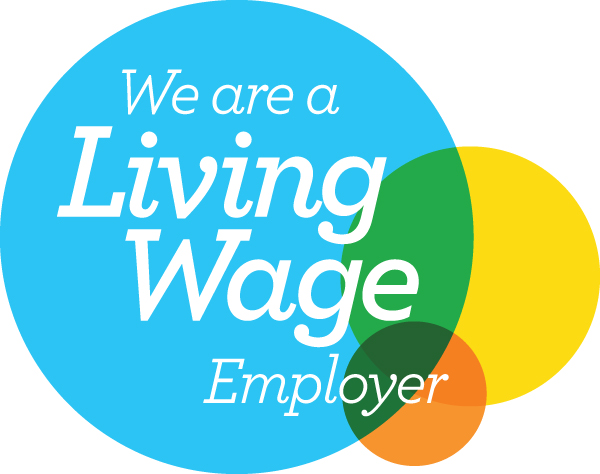Fiscal Drag by Stealth: Reeves Raises Billions Without Raising Rates
Patrick Adams, Senior Consultant26/11/2025
The 2025 Budget lands against a backdrop of weak medium-term growth, rising taxes and sustained pressure on the public finances. While the OBR has upgraded GDP for 2025, every subsequent year of the forecast period has been downgraded, leaving the United Kingdom on a slower growth trajectory than previously expected.
Productivity remains stuck at 1 percent, inflation stays above target until 2027, and higher wage growth increases both tax receipts and cost pressures on firms. Within this constrained environment, the Chancellor has relied heavily on fiscal drag, new charges and welfare reversals to balance the books. Taxes will rise to 38 percent of GDP by the end of the decade, the highest level in modern UK history, even as spending remains elevated and debt continues its upward drift.
Although the Government meets its fiscal rules, the margin is narrow and highly exposed to risks in local authority finances, persistent inflation and ongoing weakness in productivity. This Budget represents an attempt to stabilise the fiscal position while providing targeted support to households. However, many of the measures place additional pressure on businesses, increase the overall tax burden and rely on revenues that will be sensitive to any further deterioration in the economic outlook. The following provides a top line breakdown of the core announcements and their fiscal impact.
Budget 2025: Itemised Top Line Breakdown
1. Overall Tax Position
- Taxes are rising overall, with the tax burden reaching 38 percent of GDP by 2030 to 2031 - the highest in modern UK history.
- Fiscal drag does most of the work, as the freeze on income tax thresholds brings around 1.7 million people into paying more tax.
- New charges increase revenues,
including the introduction of a new annual tax on residential properties valued
above £2 million, expected to raise £400 million a year from 2028, and the
shift of social and environmental levies from electricity bills into general
taxation, costing the Treasury around £3 billion next year and £2 billion
annually thereafter.
-
National Living Wage
rises add
indirect tax pressure, as higher wages increase employer tax liabilities.
2. Key Tax Raising Measures (Total: £26bn a year by 2029–30)
- Income tax threshold freeze extension
- Raises £8bn by 2029-30.
- National Insurance on salary sacrifice pension: Ends the NI discount on pension contributions made through salary sacrifice, meaning these contributions will now be liable for full employer and employee NI.
- Raises £4.7bn.
- Dividend, savings and property income tax rises: Increases the tax rates applied to dividend income, savings income and property income. Designed to ensure investment and rental income contribute more to the revenue mix.
- Raises £2.1bn.
- Electric vehicle mileage charge from 2028
- Raises £1.4bn.
- Reduction in writing down allowances: Cuts the amount businesses can deduct each year for the depreciation of assets like machinery and equipment. Means companies get a smaller tax relief on investment costs.
- Raises £1.5bn.
- Gambling tax reforms: Merges the current three betting and gaming duties into a single, higher rate system. Ensures online gambling operators pay more in line with their rising market share.
- Raises £1.1bn.
- HMRC compliance and enforcement package
- Raises £2.3bn.
3. High Value Property Tax (Raises £400m a year)
- Introduced from 2028.
- Applies to residential properties valued above £2 million.
- Expected to raise £400 million annually once fully implemented.
4. Welfare Measures (Total cost: £10bn a year by 2029–30)
- Scrapping the two child benefit limit
- Costs £3bn annually.
- Supports 560,000 families, with an average boost of £5,310.
- Reversal of winter fuel and health related benefit cuts
- Costs £7bn a year.
5. Energy and Environmental Measures
- Removal of social and environmental levies from electricity bills
- Renewables Obligation funded from general taxation.
- Costs £3bn next year, then £2bn annually until 2029–30.
6. Growth Outlook (OBR)
Short Term
- 2025 upgraded: GDP growth now 1.5 percent (previously 1 percent).
Medium Term: All downgraded
- 2026: 1.4 percent (down from 1.9).
- 2027: 1.6 percent (down from 1.8).
- 2028: 1.5 percent (down from 1.7).
- 2029: 1.5 percent (down from 1.8).
Underlying Weakness
- Productivity remains stuck at 1 percent, depressing medium term growth.
7. Fiscal Position and Risks
- Borrowing falls from 4.5 percent of GDP (2025–26) to 1.9 percent by 2030–31.
- Debt rises to 96 percent of GDP, near historic highs.
- Fiscal rules met with £22bn headroom, which the OBR warns is thin.
- Major risks include:
- Weak productivity
- Local authority distress
- Persistent inflation
- Higher welfare caseloads
Fiscal
Drag by Stealth: Reeves Raises Billions Without Raising Rates
Rachel Reeves delivered her second Budget at a politically delicate moment. She needed a statement that demonstrated grip, seriousness and fiscal credibility, not only for the markets but also for increasingly anxious Labour MPs who fear the Government’s early unpopularity may harden.
The Office for Budget Responsibility’s (OBR) early released Economic and Fiscal Outlook sets the backdrop for her decisions. It presents a growing economy, but only modestly, with a mixed outlook. The OBR has upgraded GDP growth for 2025 to 1.5 per cent, compared with the 1 per cent expected earlier this year, giving Reeves a short term boost, every year after 2025 has been downgraded from the OBR’s March forecast, with growth now expected to slow to 1.4 per cent in 2026, 1.6 per cent in 2027, and 1.5 per cent in both 2028 and 2029. Productivity remains the central weakness, with medium-term expectations reduced again to just 1 per cent. Inflation is easing but remains higher for longer, sitting at around 3.5 per cent in 2025 and not returning to the 2 per cent target until 2027. Wages are rising faster than expected, which supports the Treasury’s revenue position but intensifies pressure on firms already struggling with higher labour costs.
Public finances improve gradually but remain fragile. Borrowing is set to fall from about 4.5 per cent of GDP in 2025 to 2026 to around 1.9 per cent by 2030 to 2031, yet public debt continues rising to roughly 97 per cent of GDP before dipping slightly at the end of the decade. Taxes rise to a record 38 per cent of GDP, while spending remains high at about 44 per cent. The OBR warns that the public finances are vulnerable to shocks, including weak productivity, local authority failures, higher welfare caseloads and rising gilt yields. Reeves attributed many of these structural weaknesses to Brexit, Covid and the decisions of the previous Government.
The most significant political decision in the Budget is the extension of the freeze on income tax thresholds. This continues the policy of fiscal drag and allows the Treasury to raise billions without altering headline tax rates. Reeves can argue that she has honoured Labour’s manifesto pledge not to raise income tax on working people. In practice, however, millions will pay more. Around 780,000 people will be brought into paying income tax for the first time, and about 920,000 more will enter the higher rate. It is a delicate compromise: technically, the pledge is intact, but the lived experience for taxpayers will be very different.
Reeves attempted to cushion the impact through a set of measures to ease living costs. Yet these choices place more pressure on businesses than they relieve. The rise in the National Living Wage signals Labour’s priorities. Still, firms warn that repeated above-inflation increases compress margins, discourage hiring and weaken investment at a time when business confidence is already fragile. Freezes on prescription charges, further restraint on rail fares and the extension of the fuel duty cut offer modest help to households but do little to offset the higher wage bill now facing employers.
One of the more politically sensitive decisions is the removal of certain social and environmental levies from electricity bills. The shift aligns with calls from energy companies and environmental groups to make electricity cheaper and accelerate the transition to low-carbon technologies. However, the Government has chosen to temporarily fund the Renewables Obligation from general taxation, at a cost of around £3 billion next year and roughly £2 billion annually until the scheme ends in 2029 to 2030. This reinforces the sense that the Budget depends heavily on indirect increases in the overall tax burden. A new annual tax on properties valued at over £2 million from 2028, expected to raise £400 million, adds to that impression.
The decision to scrap the two-child benefit limit is politically complex, especially when combined with the wider welfare reversals detailed by the OBR. The leaked document indicates that abandoning the planned cuts to winter fuel payments and health-related benefits will cost around £7 billion by 2029 to 2030, while ending the cap would add a further £3 billion. These changes will increase support for roughly 560,000 families, who will gain an average of about £5,310 a year. Labour MPs who saw the cap as incompatible with social justice will welcome the move. However, many voters remain wary of higher welfare spending, particularly amid rising taxation. The Opposition will argue that Reeves has prioritised internal party sentiment over fiscal discipline. Combined with new mayoral powers to levy tourism taxes, already alarming the hospitality sector, this risks further alienating business groups that had been hoping for a more investment-focused approach.
The OBR’s assessment shows that the Government meets its fiscal rules, but only with around £22 billion of headroom. Given the scale of the risks, this is worryingly thin. If productivity weakens further or if more local authorities fall into financial distress, the Chancellor’s numbers could unravel quickly.
Politically, Reeves has bought the Government some breathing space. The Budget is coherent, cautious and rooted in fiscal realism. Yet coherence is not the same as popularity. The public will feel the effects of budgetary drag long before they see the benefits of long-term stability. Labour MPs fear that the Government’s early unpopularity may solidify without a more compelling economic narrative.
For now, Reeves has made her case: a Budget shaped by both a weak economic outlook and the OBR’s constraints. The reaction in the chamber indicates Labour MPs support these measures. Whether voters accept that argument will define the political years ahead.
We’ve cultivated an environment that harbours independence. Whether they are early birds who go to yoga and then smash their news updates before 8.30am, or they simply hate travelling on the tube in rush hour, we trust and respect our team’s skills and conscientiousness. As long as core responsibilities are covered, our team is free to work flexibly.
We’re proud to be a living wage employer. We believe that no one should have to choose between financial stability and doing a job they love, so we pay a wage that allows our team to save for a rainy day and guarantees a good quality of life.
Sign up to receive the Atticus Agenda
Sign Up Here



